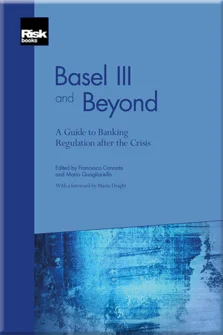The New Framework for Liquidity Risk
Gianluca Trevisan
Foreword
Introduction to 'Basel III and Beyond'
The Big Financial Crisis
The Policy Response: From the G20 Requests to the FSB Roadmap; Working Towards the Proposals of the Basel Committee
The New Definition of Regulatory Capital
A New Framework for the Trading Book
Counterparty Credit Risk and Other Risk-Coverage Measures
Tools for Mitigating the Procyclicality of Financial Regulation
The Regulatory Leverage Ratio
The New Framework for Liquidity Risk
The Discipline of Credit Rating Agencies
Systemically Important Banks
Regulating Remuneration Schemes in Banking
Crisis Management and Resolution
The Impact of the New Regulatory Framework
A Brazilian Perspective on Basel III
A New Institutional Framework for Financial Regulation and Supervision
Structural Regulation Redux: The Volcker Rule
The Changing Uses of Contingent Capital under the Basel III Framework
8.1 Introduction
Liquidity risk management has become a fast-evolving discipline. The reassessment of management practices and techniques to identify, measure and monitor this risk is strictly intertwined with the regulatory reform introduced by the Basel Committee under the political input of G20 leaders and the high-level commitment of the Financial Stability Board (FSB). This chapter will discuss the new regulations as they relate to liquidity risk.
Liquidity risk can be defined as “the ability to fund increases in assets and meet obligations as they come due, without incurring unacceptable losses” (BCBS 2008a). It generally manifests itself in the form of a failure to meet payment obligations, which may be caused by an inability to raise the necessary funds (funding liquidity risk) or the existence of limitations on the liquidation of assets (market liquidity risk). Liquidity risk also includes the risk of having to meet payment obligations at non-market costs, ie, incurring high funding costs or (and sometimes at the same time as) capital losses where assets have to be liquidated.
On
Copyright Infopro Digital Limited. All rights reserved.
As outlined in our terms and conditions, https://www.infopro-digital.com/terms-and-conditions/subscriptions/ (point 2.4), printing is limited to a single copy.
If you would like to purchase additional rights please email info@risk.net
Copyright Infopro Digital Limited. All rights reserved.
You may share this content using our article tools. As outlined in our terms and conditions, https://www.infopro-digital.com/terms-and-conditions/subscriptions/ (clause 2.4), an Authorised User may only make one copy of the materials for their own personal use. You must also comply with the restrictions in clause 2.5.
If you would like to purchase additional rights please email info@risk.net











